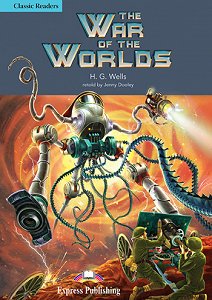In this post, we set off to explore a set of Design Thinking activities for the ESL Classroom. We find out what Design Thinking is, and identify how we can introduce the approach to our classrooms to boost critical thinking while building on our students’ language skills.
What is Design Thinking?
Design thinking is the process of actively observing a situation to identify issues or problems it may have, and coming up with ways to improve it.
Empathy, cooperation, and experimentation lay at the heart of the process: we, as the Design Thinking team, must relate to the people involved in a given situation and adopt a trial-and-error approach to solve their problems.
As a first step, we observe the situation to identify any flaws or problems. In the next stage, we come together to brainstorm ways to solve the issue at hand. Each team member offers their perspective, put forward their expertise, and the whole team experiments in a low-risk environment to test possible solutions.
Interested in introducing more collaborative activities to your class? The Six Thinking Hats approach might be what you are looking for!
Design Thinking Activities for the ESL Classroom
Challenges in Design Thinking don’t have to be big. Start small and see where this gets you! Besides, regardless of the problem’s size, the Design Thinking process has many opportunities for learning embedded in it. Students learn how to define a particular problem, understand needs and limitations, brainstorm ideas and solutions, and incorporate feedback.
The Design Thinking challenges listed below are adapted (or can be adapted) for every CEFR level and age.

This activity is adapted from ESP Social Media Marketing, page 30
Duration: 30 min.(+ Extension)
Focus: Speaking & Writing (Reports)
Unit 14 of our Career Paths course book on Social Media Marketing focuses on the ways we can measure the outreach of our social media strategy.
After completing the unit, divide students into teams. Each team member assumes a certain role in the social media team, like that of the copywriter, graphic designer, project manager, or marketing analyst—if students are not familiar with the roles, they can either look up the job descriptions online or choose among fewer options.
Show students the social media account of company X.
Then, ask them to evaluate their social media presence; provide some guiding questions (How often do they post? How many followers do they have? Do they start conversations?) and let them come up with additional ones. At this point, they should use the template to specify whom they are trying to help and why their help is needed.
Then, move on to Stage 2: students should now define the issue at hand. After detecting the flaws of the company’s social media presence, they brainstorm to find smart solutions that will improve it.
Finally, students evaluate their ideas (Do we solve the problem? Are our ideas feasible?), conclude to the best ones, and present their findings to the class.
As an extension to the activity, students can compose a report that features their suggestions and the ways to achieve the desired results.
One is not born a good writer! Hone your students’ writing skills with the Art of Writing and help them write clear, concise reports.
This activity is adapted from Right On 2, page 70
Duration: 20 min. (+ Extension)
Focus: Speaking
Being a teenager or a young adult comes with challenges; one of the biggest ones is being safe online. Right On 2 deals with the topic and gives students tips that ensure a safer online experience.
Before you work on the book’s pages, divide students into groups and hand out the Design Thinking steps; after explaining what questions they should be asking at each stage, point their attention to Step 1 and ask them to evaluate their online behaviour to identify any situations that could potentially endanger them. Then, have them move through the rest of the stages of the Design Thinking process. At the end of the task, ask them to compare their ideas with those of the book.
Use readers!
In almost every work of literature, the central character sooner or later encounters a challenge.
In the Level 2 (CEFR Level A2) reader Around the World in 80 Days, Phileas Fogg and his crew are caught in a gale;
In the War of Worlds (CEFR Level B2), the narrator of the story hides in the ruins of a house and has to come up with a solution to save himself from a Martian attack;
Alice, in her adventures in Wonderland, similarly faces obstacles that she needs to overcome.
The rabbit ran around a corner. Alice followed, but when she turned the corner the rabbit wasn’t there. Alice was in a long, low room with doors all around it. She tried to open the doors, but they were all locked.
“What am I going to do now?” she thought.
“How am I going to get out of here?”
Micro-activities in Design Thinking are an ideal choice when you want to work on problem-solving and creative thinking but your class time restraints you. Ask your students to come up with ideas that could help the heroes and heroines of the stories overcome the challenges presented to them and foster a can-do mindset early on!
To find the students’ handout, click here.
-1.png)












